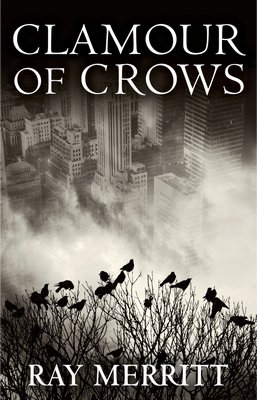
Ray Merritt has been an international lawyer, associated with the firm of Willkie Farr & Gallagher. He has also been a successful writer and editor of photography books, notably the award-winning “Full of Grace: A Journey Through the History of Childhood,” and “A Thousand Hounds.”
His latest book is his first foray into fiction—more specifically, detective fiction. “Clamour of Crows” (The Permanent Press, 304 pp, $29.95) is at once a page turner, an excoriation of the worst aspects of the legal profession, a witty meandering through children’s literature, and a playful exploration of the “terms of venery,” which have nothing to do with sensuality, as one might suppose. They are actually the names for groups of animals, most well-known to moderns from James Lipton’s book “An Exaltation of Larks.” These date back to the late Middle-Ages, and knowledge of them was the mark of a gentleman. Today they have become a parlor game for lovers of words. We have a “flutter of butterflies,” “a flamboyance of flamingoes” and “a cackle of hyenas.” Mr. Merritt barely scratches the surface with his own concoctions: “a joint of osteopaths, a rash of dermatologists, a stream of urologists, a balance of accountants.” And, of course, “a clamour of crows.” These terms pop up throughout the narrative.
The reader will enjoy this harmless fun. And the fun begins immediately. His protagonist, Jack Tucker, whom everyone calls “Tuck,” wakes up with a female in his bed. She responds to his attentions by wagging her tail. She is his dog, “Nip.”
But there is a tragic backstory to this amiable beginning. Tuck’s wife and children died in a suspicious auto accident three years ago. He left his white-shoe law firm and mourned for them in what he calls “the 20-acre wood, a piece of land in the Hamptons,” and a little nod to “Winnie the Pooh.”
Tuck is called back by his former mentor in the law firm, Winston Barr & Trombley. The firm’s biggest client has died in suspicious circumstances. Of course the client’s name is Ben Baum, a distaff descendant of L. Frank Baum of “The Wizard of Oz” fame. Baum’s company is called Ozone. (Of course it is.) The legal ramifications of this are painstakingly laid out, and the estate is complicated. Baum has a daughter (Dorothy), an autistic son, and a second wife, who is expecting. It is Dorothy, particularly, who wants Tuck to look into the case. He was the attorney in the firm who had worked most closely with her father and Ozone.
There are several divisions within the company, and several malefactors of great wealth who have an interest in it. There are also a few just plain malefactors, one of whom, in motorcycle leathers takes a ride-by swipe at Nip, with a metal baton. Somehow Nip survives.
Tuck is hired to sort out the complications and to find out whether or not Baum died naturally or was murdered. He is assisted in this with a couple of crackerjack lawyers he personally chose.
Baum leaves a precatory letter, a letter of his wishes that is not legally binding. The letter is so full of references to elves and dwarfs, and partly written in the runes of the Elvish tongue devised by J.R.R. Tolkien, that almost indicates that he was not of sound mind when he wrote it. It’s Tuck’s job to decipher the letter, determine whether or not he was murdered, and show that he was perfectly sane, if a little quirky, before the meeting of Ozone’s board. Some of the legal complications are a little difficult for the lay person to fully grasp, but there is no doubt that good has to conquer evil, and along the way Mr. Merritt can play with the titles of, the characters in, and the authors of children’s books along with the terms of venery. In Spain, for instance he comes across, “a flock of tourists, a scurry of nuns, and a cloister of monks.” (Sorry, one needs to share these things.)
You will also learn the real meaning of the delightful, though nonsensical, “The Twelve Days of Christmas.” Crows appear everywhere, not only in the text, but in little drawings at the head of every chapter.
Ray Merritt has written a gripping mystery, which also happens to be an amusing and playful novel.